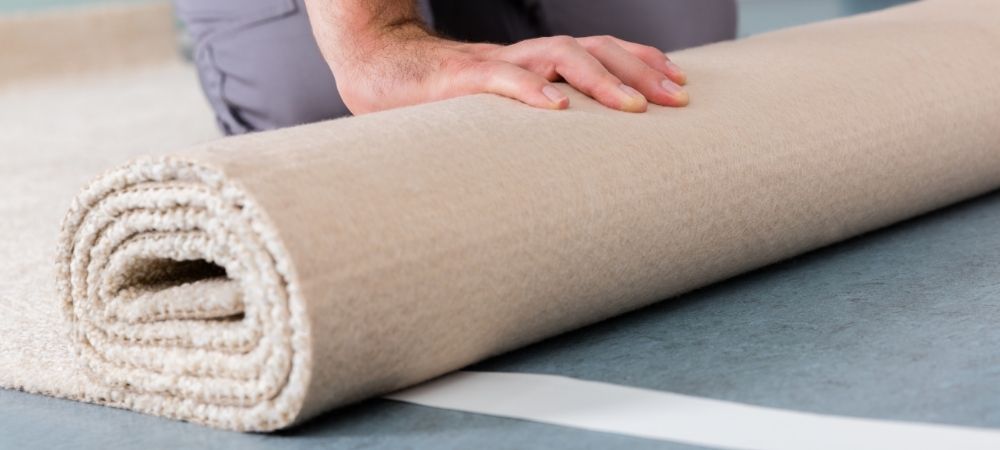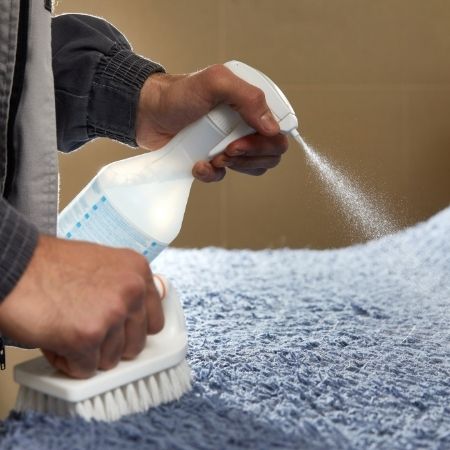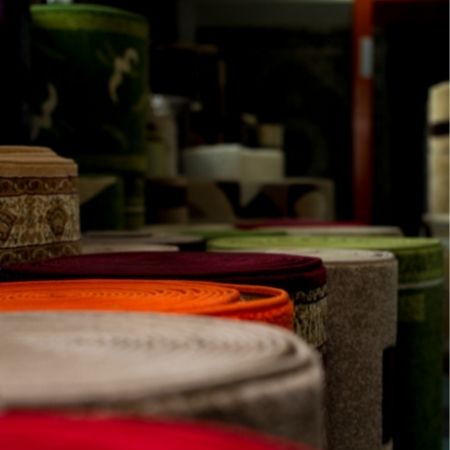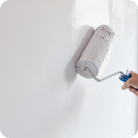How to Properly Store Rugs and Carpets in 5 Steps

Learning how to store rugs and carpets is essential to keep them from getting damaged in storage. Whether you have a carpet that perfectly matches to your mid-century modern living room, a favorite statement rug, or you like to switch out area rugs every so often to spruce up your space—a rug or carpet can ultimately change the look, vibe and style of a room. (Even though they just go under your feet.)
Rugs and carpets are valuable, and they’re expensive. So, make sure you take extra care when storing them! Protect your carpet and rugs from creasing, fading, attracting bugs and growing mold by following these steps. We’ll outline the potential damage your rug or carpet may face if stored incorrectly, and how to keep them in great shape for the short or long term!
How to store your rugs and carpets in 5 easy steps:
- Deep clean your rug or carpet
- Use moth and pest repellant
- Roll up the rug or carpet
- Wrap your rug or carpet
- Store the rug or carpet vertically
Clean the Rug or Carpet

It’s vital to clean your rug or carpet before storing it. You may think that occasional vacuuming and spot cleaning is sufficient, but no matter how long you’re storing your rug or carpet, it needs to be thoroughly cleaned. Not cleaning your rug can potentially cause damage to fibers as well as attract insects and mold.
Different types of rugs and carpet require different cleaning methods, but always check for a manufacturer’s tag and follow the instructions. Also, after cleaning, make sure that your rug or carpet is completely dry before moving onto the next steps!
How to clean synthetic rugs
Start cleaning your synthetic rug by vacuuming it. After vacuuming, give your rug a deeper clean by putting it in the washer on a gentle setting (only if the manufacturer’s tag says it is machine-washable). If your rug cannot be put in the washer or if it is too big, hose down the rug and use a rug soap. Scrub it clean and leave it to dry.
How to clean antique and oriental rugs
Make sure to put a nylon screen on top of your rug before vacuuming it. In order to deep clean it, it’s a good idea to call a professional rug cleaning company. If you’d rather do it yourself, be sure to check with an expert in your area for specific instructions on cleaning your rug properly.
How to clean fur or sheepskin rugs
Cleaning your fur or sheepskin rug may seem complicated, but it’s actually fairly easy. Just spread talcum powder on the rug and let it sit for a few hours (or overnight). Then, shake it out until you don’t see any traces of powder left. Repeat the process one or two more times.
You can also vacuum your rug, just make sure to be cautious and use a very low setting.
How to clean woven rugs
The best way to clean woven rugs is in the washer. Use warm water, a gentle setting, a small amount of detergent and a teaspoon of white vinegar, then hang the rug to dry. If your rug is too big to fit in the washer, consider using a laundromat or professional cleaning company.
Stop Moths and Pests with Repellent
The last thing you want after carefully cleaning your rug and putting it in storage is to invite moths and pests to move in! Avoid any insect damage to your rug or carpet by using insect and moth repellent. Consider moth repellant crystals. Check out these tips to protect your rugs from bugs and moths.
Roll up your Rug or Carpet
You never want to fold your rug or carpet. Folding can cause creasing and damage the backing. Instead, roll the rug. Determine whether the pile (the top) or the back of the rug is more fragile, and roll with the most fragile part facing inward. (Typically, the pile is more fragile—so roll with the pile facing in.) Follow the grain and use a rod to keep it straight.
Wrap it up
A common misconception when storing a rug or carpet is to wrap it in plastic. But plastic wrappings prevent breathability and can therefore cause mold or mildew to form. Instead, use a cotton sheet, brown craft paper or even muslin to wrap around the rug one and a half times, and secure with tape or a piece of cotton.

Store Rugs and Carpets Vertically
Avoid damaging the shape and structure of your rug by storing it vertically. You’ll also want to make sure you don’t place it directly on the ground, so use a pallet or tarp to elevate the rug or carpet. Finally, don’t lean anything on the rug to ensure it keeps its shape.
Get a Climate-Controlled Storage Unit
After following all the steps above, give your rug or carpet the ultimate protection with climate-controlled storage. These units stay between 55- and 80 degrees Fahrenheit to mitigate any damage from humidity. Drastic changes in temperature and humidity can cause mold or mildew to form on your rug or carpet, so avoid these issues with a temperature-regulated unit!
Common FAQS for Storing Carpets and Rugs
Q: What is the best way to store rugs?
A: Follow the above steps to correctly store your rug. Make sure to clean the rug, protect it from insects, roll it up, wrap it, and store it off the ground in a temperature-regulated area.
Q: How do you store a rug long-term?
A: No matter how long you store your rug, you should be sure to store it correctly (and follow the above steps) to avoid damage. If your rug is stored long-term, it’s a good idea to unroll and check your rug for damage every few months. You can also vacuum the rug regularly to help keep insects away.
Q: How do you wrap a rug for storage?
A: Wrap your rug in either cotton, brown paper or muslin one and a half. Then secure with tape or a piece of cotton.
Q: Can rugs be stored in the attic?
A: Rugs can be stored in the attic, but make sure to run a fan or humidifier, block light from windows and vacuum the storage area regularly. Attics normally lack ventilation, so taking these extra steps is crucial to keep your rug in good condition.
Q: Is it OK to fold a rug?
A: If possible, you should never fold a rug. Instead, roll it. Folding your rug can cause creases and damage the backing of your rug.
Final Thoughts: Storing Rugs and Carpet
Hopefully these steps have helped you successfully store your rugs and carpet for storage. We want them to stay in great shape, wherever you store them!
If you decide to rent a storage unit for your rug or carpet, check out Store Space. Our climate-controlled units ensure that your rugs and carpets are protected from heat and humidity year-round. Just use our storage location finder to locate your nearest facility, and start storing today!






